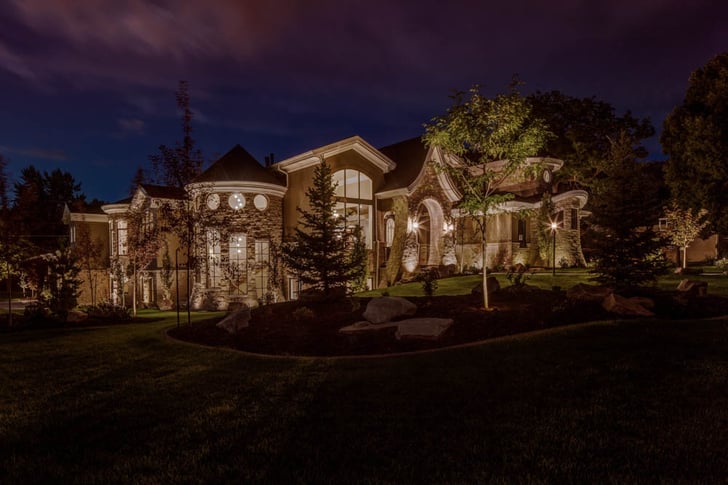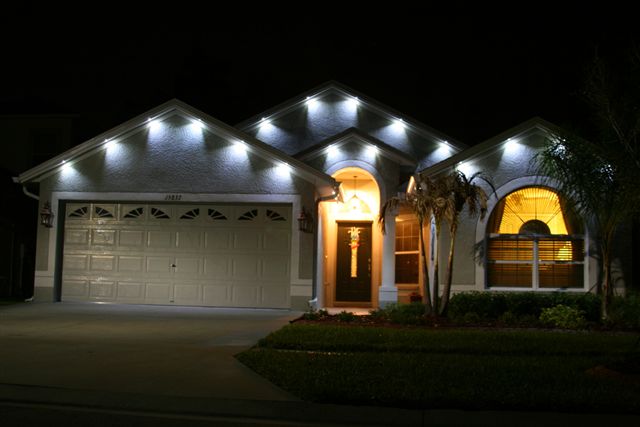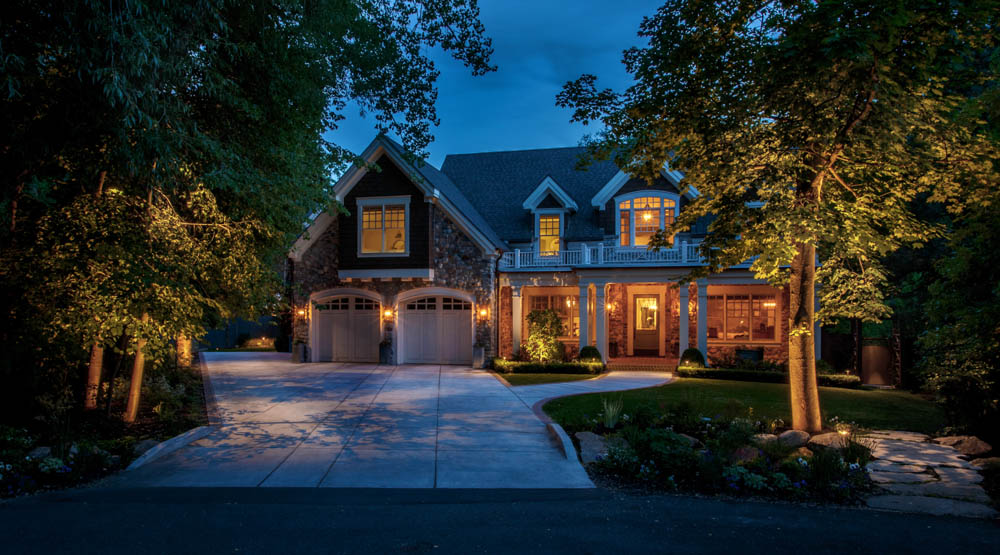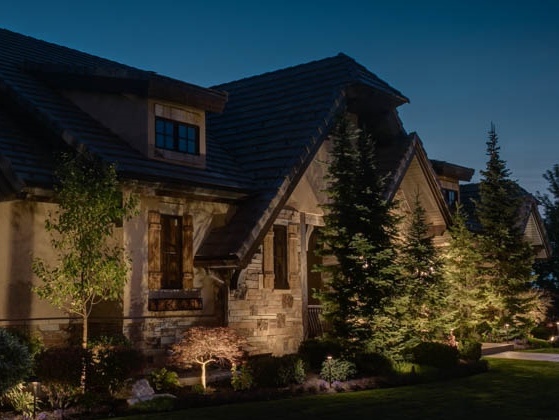Architectural Up Lighting: The Alternative to Exterior Soffit Lighting
Everyone wants their home beautifully lit. Architectural lighting helps showcase your home’s best features. There are a number of ways architectural lighting can be achieved. One way, the most common way we see in newer homes, is to have recessed canned lights installed in the soffits beneath the roof line.

Exterior soffit lighting can add a functional light source that also helps to light your home’s architecture. Lighting your home this way, however, can become a slippery slope if it doesn’t integrate any other kind of architectural lighting. While there are some great examples of soffit lighting, we rarely get to see the less appealing reality. When soffit lighting is done without any other architectural lighting, it can look like the rooftop is lifting off from the house.

What I’m talking about is often referred to as the spaceship effect. When the only lights on a home are canned soffit lights under the roof line, it can create the illusion that the roof is actually an alien spaceship getting ready for lift off. For those sci-fi fans out there, this might be ideal. But for the rest of us, the spaceship effect is less than desirable.
Bad soffit lighting is overwhelming and can create a glaring undesired effect. Lighting a home’s architecture strictly from the soffit is a backwards approach. If a home is being lit to make it soft, warm, and inviting, then it should be lit from the ground up – not the other way around.
The last thing we want is for a home to feel as though it’s getting ready to fly off into space. Lighting from the ground up is the best remedy. Lighting from the ground up provides a foundation to anchor the home to the ground. When our light starts at the ground level and works its way up, it provides a better composition and balance for the overall lighting effect.
By tying our lighting to the home’s foundation, it becomes anchored.
Landscape lighting is a key part of the foundation. Illuminating our home’s walkways, trees, hardscapes, and other features, helps tie the architectural lighting to the foundation better. When landscape lighting is incorporated with architectural lighting, it helps create an overall balanced lighting effect.

Landscape lighting and architectural lighting are a two way street. Having one without the other can potentially create an eerie effect. If we were to only up light a few trees in someone’s front lawn without any other lighting, for example, it can look as though the trees were just floating in the dark. Now, let’s take that same example and add some up lighting and wash lighting to the home in the background. All of a sudden everything comes together. The architectural lighting creates a backdrop for the landscape, and the landscape lighting helps anchor the home to the ground. Often people just want us to light their landscape and not their home. They don’t realize that by lighting their home, we are able to create different layers of light. It’s the culmination of these layers that creates a completed lighting design.

Lighting architectural features from the foundation is where our good solid basis for lighting design starts. The balance and composition of different layers shouldn’t be overlooked in any residential property.
Give us a call
To learn more about how to light your outdoor living space, call us at (801) 440-7647 to schedule a free consultation, or feel free to simply fill out a contact form.
Salt Lake City (Midvale)
801-440-7647
St. George
435-932-6627
©2025 Landscape Lighting Pro
Privacy Policy
Cookie Policy